Apple's White-Male Board Votes Down Diversity Proposal
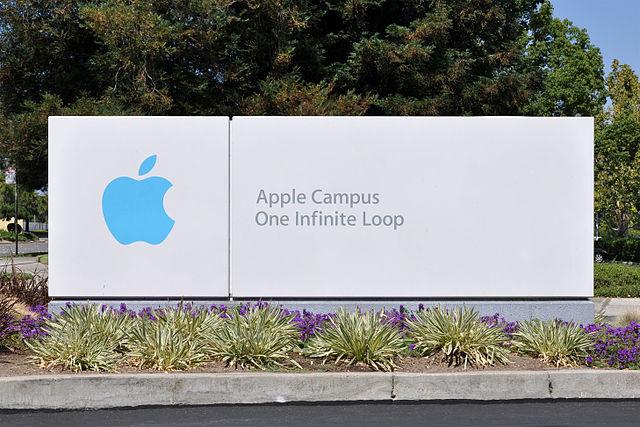

Despite an outward commitment to diversity, when push comes to shove, Apple's white- and male-dominated leadership isn't willing to give up its seats for women or people of color. As it turns out, this type of thinking applies to the company as a whole.
Diversity is a big topic in the tech industry, and for good reason. The industry that is supposed to represent the “future” of the country – the technologies transforming our day-to-day lives – is touted as an industry in which opportunities are due to merit. These companies are not tied to the old corporate structures of the past. So, it defies logic that the tech industry is actually one of the least diverse in America: overwhelmingly white and male, and severally under-representing African-Americans, Hispanics and Native Americans.
This is why, for years, tech companies, which outwardly believed in openness, refused to share demographic data. In 2014 and 2015, public pressure forced many of them to disclose this information. What we found out was shocking and, yet, unsurprising. The industry of the future looked a lot like the industries of the past – and I mean the distant past.
At first glace, Apple's figures don't look so bad, when compared to other tech giants: 31 percent female and only 74 percent white/Asian. But there's a catch. These figures include staff who work in retail – think of the now-ubiquitous Apple Stores in the centers of big cities all across the U.S. Those low-wage jobs are open to diverse applicants. Remove retail, and the picture becomes a lot bleaker. Tech jobs at Apple are only 22 percent female and an astounding 88 percent white or Asian. The predominantly white and male board is, in fact, very representative of Apple as a whole.
That was why Antonio Avian Maldonado II, who holds 600 shares of Apple, submitted a proposal urging the company to move faster to diversify senior management and its board of directors. According to a recent Huffington Post report, there is just one African-American man and two women on Apple's eight-person board, and one African-American woman and two white women on its 18-member executive team. Even Asians – who are over-represented in Apple's tech staff -- can't break the glass ceiling.
Here's the worst part. Apple not only voted down the proposal, but thinks everything is fine – saying in a statement that the company “has demonstrated to shareholders its commitment to inclusion and diversity, which are core values for our company."
I, for one, do not use Apple products, and after this callous action by the board, I see no reason to give the company my hard-earned money. Two years after diversity in the tech industry made headlines across the country, it is clear that Apple, Google, Twitter and the multitudes of other tech companies need to do a whole lot more before their staff resembles their users.
Image credit: Joe Ravi via Wikipedia
Can Geoengineering Help Solve the Middle East’s Water Woes?
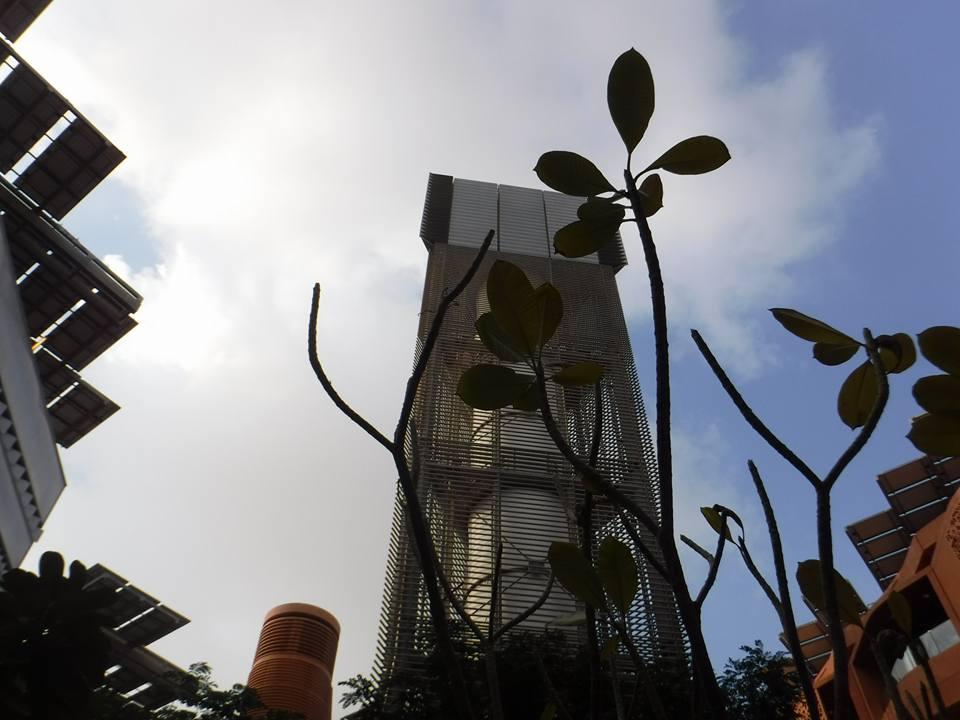

Geoengineering has fomented plenty of controversy as a means of avoiding the risks of climate change. As the argument goes, long-term plans to mitigate climate change, such as the agreement reached at the COP21 talks in Paris last month, cannot happen fast enough to prevent this global warming car-crash from occurring. Radical actions may have risk, but the risk is not doing enough or fast enough, which is why some leaders such as Bill Gates have touted geoengineering in recent years. Ideas for geoengineering span the map, including ocean fertilization to create a massive marine carbon sink, carbon air capture, carbon capture and storage, enhanced weathering, and cloud seeding.
Opponents of geoengineering point out the the risk of a wide-scale project going awry is reason enough to nix those ideas before they become reality. Nevertheless, the concept is sprouting all kinds of ideas from entrepreneurs and startups across the world.
One geoengineering idea that has caught on in the United Arab Emirates is cloud seeding or, as it's called here, rain enhancement science. Home to 9.2 million people with population growth showing no signs of slowing down, the UAE is sorting out new approaches for water security. Desalination, while becoming increasingly energy efficient, is still an energy hog. The country’s aquifers are becoming rapidly depleted. And in a nation where all those wares in the hypermarket aisles are 99 percent imported, food security is also on the UAE leadership’s mind.
To that end, last year the UAE Research Program for Rain Enhancement Science was inaugurated in Abu Dhabi. One year later, this organization announced the first US$5 million in research grants distributed to accelerate the advancement of this long-touted but still unproven science. The UAE is so bullish about cloud seeding’s potential that the awardees of these first grants were feted at a posh ceremony at the lavish Emirates Palace Hotel on Tuesday night during Abu Dhabi Sustainability Week.
The three scientists leading research teams, who shared this program’s first round of awards, include Masataka Murakami, a professor from the Institute for Space-Earth Environmental Research in Nogoya, Japan. His project is centered on algorithms and sensors that will strive to identify clouds with the most potential for seeding. Linda Zou, an environmental engineering professor at Abu Dhabi’s Masdar Institute of Science and Technology, has long focused on how nanotechnology can hasten water condensation and how those technologies can be applied to cloud seeding. Finally, Volker Wulfmeyer, a professor of physics and meteorology at Germany’s University of Hohenheim, will research cloud seeding optimization in addition to processes such as land-cover modification to improve precipitation.
So, for those who think cloud seeding is a fringe science, tell that to the 325 scientists from 151 organizations who applied to participate in the UAE’s program. Cloud seeding has been a nascent technology in part because the funds for supporting its research were hard to come by. The UAE, however, is pursuing this science full throttle, which for the next several years will give many scientists and startups hope that bold ideas to take on climate change can actually mitigate its effects and prevent future droughts.
Image credit: Leon Kaye
Disclosure: Leon Kaye’s Abu Dhabi Sustainability Week expenses were provided by Masdar
This NGO is Illuminating the World with Solar
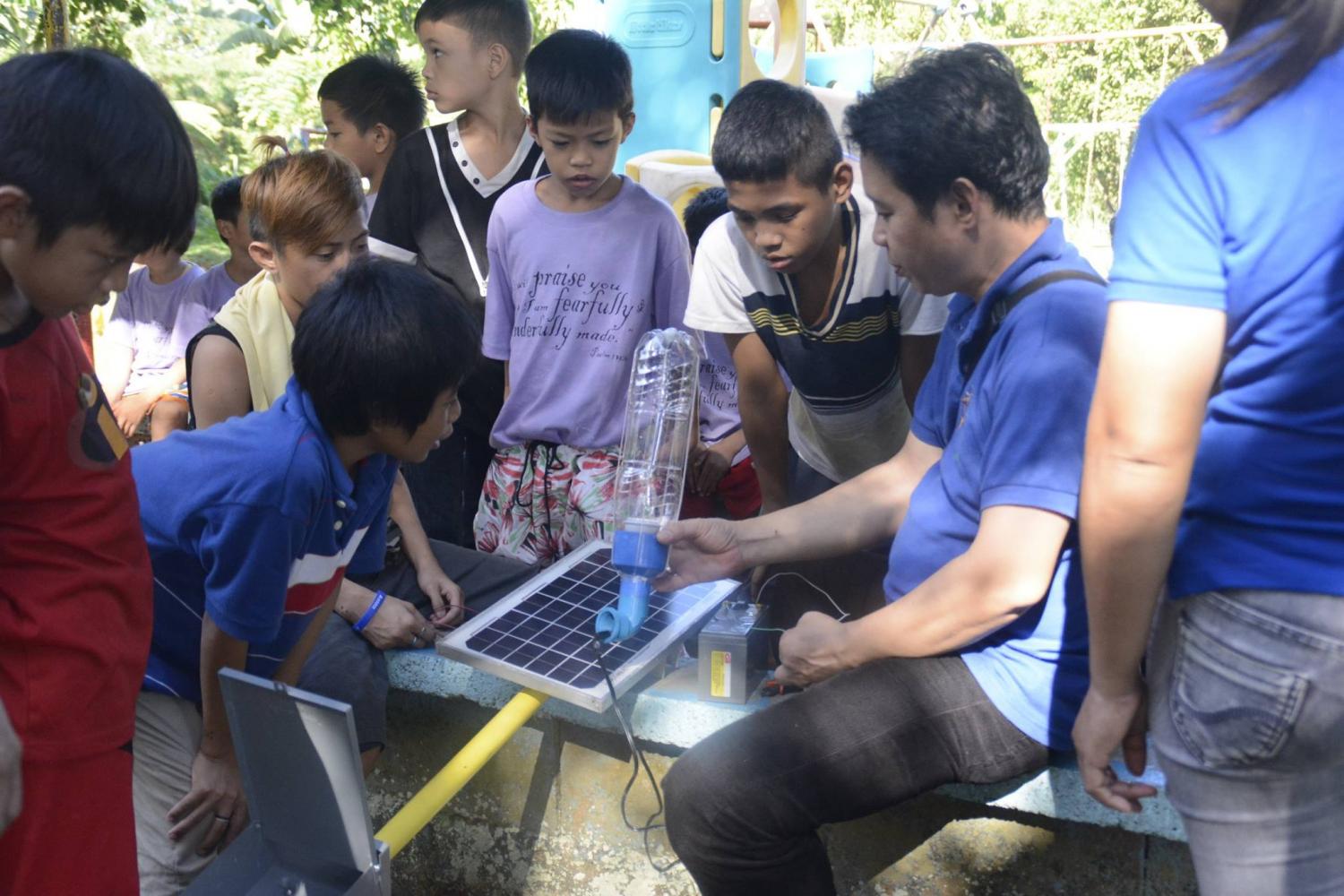

Of all the social enterprises that have helped expand energy access to the poor, Liter of Light is one of the most inspirational stories.
Based in Manila, Philippines, the NGO takes a different approach to clean energy and sustainable development than what is often prescribed in the Western world. Forget "clean technology." The premise of Liter of Light is to use materials that are plentiful and and only require basic trade skills to create lighting that can deploy rapidly in the developing world.
The organization’s first project was simple: Fill two-liter bottles with a mixture of water and bleach, install them correctly in homes, and the result is the equivalent of a 55-watt bulb that emits enough light to fill a room and allow a student to study.
First installed in communities across the Philippines in 2011 (28,000 homes in Manila alone), the concept took off across the world. Similar programs launched in India, Southeast Asia and Latin America. Now this social enterprise has moved beyond the bottles and launched programs that include solar-powered street lights. For Liter of Light, its expansion is less about the technology and more about training people who can turn around and train even more people on how to build and assemble these lights.
Despite its success, Liter of Light sought additional funding so that it could scale the deployment of its ideas worldwide. Last year the organization found success as it was named one of the 2015 Zayed Future Energy Prize (ZFEP) award winners. To learn more about the prize’s impact on Liter of Light, I spoke to its director, Ami Valdemoro.
“Being a winner of this prize has enabled us to have access to other entities who may not have heard of our mission,” Ms. Valdemoro said during our interview earlier this week during Abu Dhabi Sustainability Week. “This exposure gave us even more credibility than we had before.”
More funds meant more training and more solar lights, which of course have helped Liter of Light’s mission become even more widely known. The boost its ZFEP award offered was a catalyst in the organization’s installation of over 100,000 street lights last year, Ms. Valdemoro said. “And we estimate that success led to the empowerment of half a million people,” she continued.
The NGO's bottle lights, and now these relatively low-tech street lights, rely on training. As with the water bottle lights, these new solar lights can be built quickly, with just a few components that can be found just about anywhere. Micro solar panels, a simple circuit and materials for poles (such as bamboo) are all that are needed. The result is safer walkways at night, and of course for women, peace of mind as they walk from work to home.
As Liter of Light trains more individuals, they in turn return the favor. And even better, as Ms. Valdemoro explained, many of them start businesses from which they sell these components, which in turn offers opportunities to live a more comfortably and gain a new role as community leader.
For Ms. Valdemoro, last year’s ZFEP win will inspire even more ideas. The organization is exploring ways to build cost-effective, solar-powered mosquito catchers, solar cell phone charging stations, and even Internet access-points in rural communities that also can be powered by the sun. Liter of Light also plans to ramp up its social mission: Its lights are now illuminating the Dollo Ado refugee camp in Ethiopia, and it's now talking with other international organizations to pursue its work in other refugee camps worldwide as well.
Image credit: Liter of Light
Disclosure: Leon Kaye’s Abu Dhabi Sustainability Week expenses were provided by Masdar
3 Disruptive Technologies Driving Zero-Emission Smart Cars
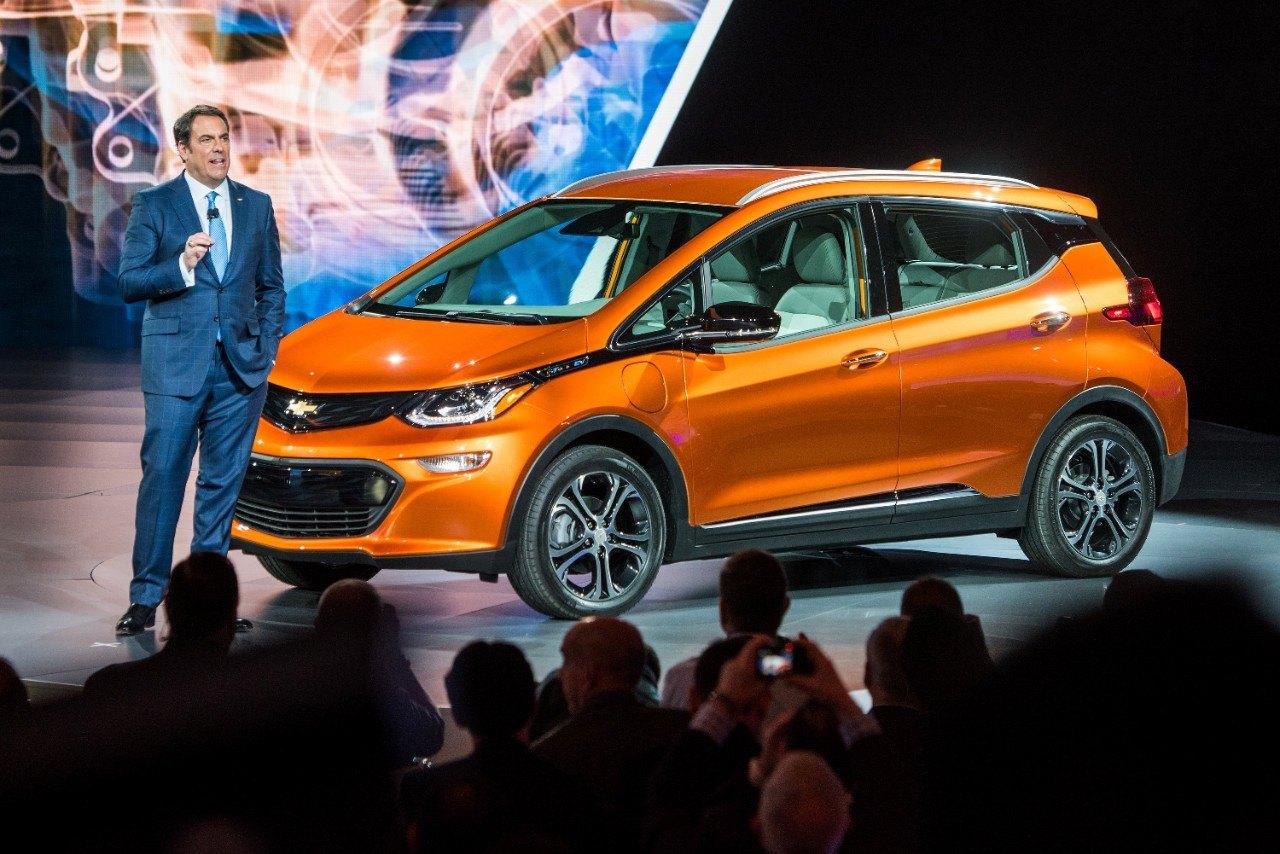

The zero-emissions smart car is on the cusp of revolutionizing what we drive, how we drive and how we pay for mobility. Three disruptive technologies (electric batteries, autonomous driving and connectivity) are enabling companies like Google, GM and Lyft to rethink the design and commercialization of the automobile.
These companies envision a global market for zero-emission smart cars that solve the congestion and pollution impacts in a world now defined by urbanization and mega-cities. As outlined in the first of this three-part series, the zero-emission smart car is an elegant economic solution that will use existing urban infrastructure to reduce, or even eliminate, congestion and deadly air pollution.
The disruptive technologies behind the zero-emissions smart car
The three disruptive technologies that will deliver zero-emission smart cars are:
- Electric cars
- Autonomous driving
- Connectivity to digital devices and smart buildings.
Adoption of any one of these technologies will have a profound influence on car design. But it is the synergies gained by combining these technologies into car design that will be transformative. The synergistic impact of these technologies are so disruptive that Ford’s leadership has begun describing themselves as a mobility, rather than car, company.
Electric cars and renewable energy generation
Electric cars have fuel costs competitive with 75 cents per gallon gasoline and are an obvious solution to the deadly air pollution that now defines the world’s 22 mega-cities. The just announced Chevy Bolt is a breakthrough, all-electric car that solves daily urban range-anxiety at a competitive price. The Bolt offers a 200-mile range between charges. Its $30,000 price after tax incentives is significantly below today’s $33,000 average for a conventional car. While the Bolt has the first-to-market innovation lead, what I saw at the 2016 North American International Auto Show was an auto industry committed to making electric cars competitive on price and performance. For example, Ford announced a $4.5 billion commitment to launch 13 electric car models by 2020.
Renewable electricity generation is the ancillary step for delivering cleaner and price-competitive electric cars. Recent bids into utility RFPs are documenting solar and wind as being at least price competitive, if not lower than, fossil fuel generation prices. The most disruptive trend is the emergence of homeowners installing solar systems that are paid for through utility bill savings. An increasing number of these solar homeowners are using their utility bill savings to lease an electric commuter car that they fuel for “free” from their solar system.
Autonomous driving
The autonomous-driving vehicle is a technology mega-trend sweeping both Silicon Valley and Detroit. Autonomous cars offer the potential of increased safety, reduced fuel consumption, reduced emissions and increased human productivity. Just one example of the collaboration building between Silicon Valley and Detroit is the recent joint announcement by Google and Ford that they will develop an autonomous car that can be mass produced. Few car companies at the North American International Auto Show did not have a plan for exploring and developing autonomous car technology.
Connectivity and default-to-green
Connectivity is the thread that enables a radical commercialization path for electric cars with autonomous driving. Enabled though big data and the Internet of Things, connectivity creates a path for real-time delivery of mobility as a service -- think: Uber delivering an autonomous, electric car you can rent and pay for with your smartphone. During the ride, your smart car provides seamless and secure connection to your home, place of work and digital media. It is this vision that is one of the reasons GM just announced a $500 million investment in Lyft.
This vision is actually being pursued in the San Francisco Bay Area. Bay Area cities and government agencies are beginning to work together on “default-to-green” solutions to traffic congestion and air pollution created by the daily urban commute. Embolden by the technology capabilities of the region’s high tech companies they are envisioning a transportation system that delivers real time, just in time, mobility as a service. This service would be sourced through smartphones and would optimize individual mobility service from a full range of transportation and cost options that will include autonomously driven electric cars, low emissions buses of various sizes and light rail. The idea is that commuters could stop driving to work and instead schedule their commute through their smart phone with the default to green smart system delivering mobility solutions optimized for cost, convenience and reduced emissions.
This article is sourced from my participation at the Looking Further With Ford event held at the 2016 North American Auto Show. The third article in this series will detail how zero-emissions smart cars will change how we think about cars, how we drive and how we live.
Image courtesy of Chevrolet
Ford Promotes Teen Safe-Driving Program at Detroit Auto Show
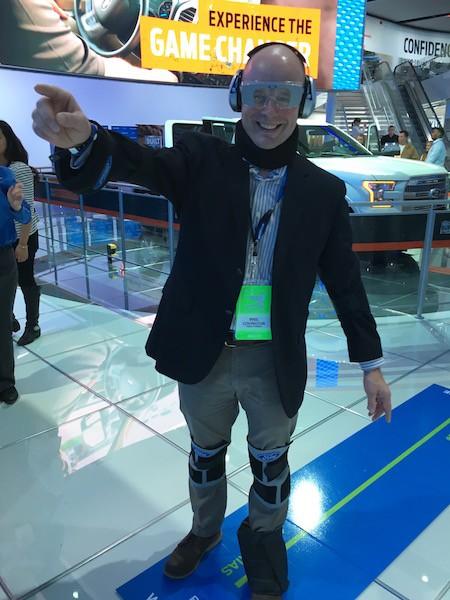

The North American International Auto Show in Detroit is, naturally, all about the cars and all about the technology that goes into them. From an environmental standpoint, most manufacturers were able to show off at least one alternative-fuel vehicle, be it a production or prototype electric, fuel cell, or plug-in hybrid vehicle.
However, looking beyond the cars themselves, there’s other interesting stuff to discover. From a corporate social responsibility (CSR) point of view, Ford* gave space on the floor to promote its teen safe-driving program, which has been in place through the Ford Motor Co. Fund since 2003. The program, operated in conjunction with the Governors Highway Safety Association, provides skills training to newly-licensed drivers -- a class of driver particularly at risk.
Ford cites the National Highway Traffic Safety Administration (NHTSA) to emphasize how important it is to make sure young drivers learn to drive safely. NHTSA says vehicle crashes constitute the leading cause of death among teenagers in America, with nearly 3,000 killed in vehicle accidents annually.
The program, Ford Driving Skills For Life, helps young drivers improve skills in four key areas which are critical factors in more than 60 percent of vehicle crashes, including hazard recognition, vehicle handling, speed management and space management. Training is provided either through hands-on events that are conducted under the program or via interactive, Web-based resources.
An important feature of the program is highlighting the hazards of driving while impaired by either alcohol or drugs. And in its hands-on sessions with young drivers, Ford devised a way to simulate how the senses are dulled by driving under the influence. The company made the simulated experience available to visitors at the Detroit show, which I can attest is quite effective.
The picture at the top of this article shows me “under the simulated influence of alcohol,” outfitted with weights on one leg and opposite arm to create imbalance; braces on my knees and around my neck to restrict normal movement; goggles which create disconcerting double vision; and headphones to create hearing impairment. I was then asked to walk the green line, and figured I’d be able to override these distractions. Instead, I found it absolutely impossible to walk normally; certainly I would have failed a sobriety check. The simulation was scientifically designed to reflect as accurately as possible how the body is impaired by specific classes of substances, and not just knock you off balance by any means.
The program encourages the involvement of parents in the process of skills training, recognizing that parents are important role models for their kids, and, importantly, parents' behavior behind the wheel is often emulated by teen drivers.
In 2015, Ford Driving Skills For Life was conducted in 29 countries, providing hands-on training to almost 25,000 teens and parents around the world. Additionally, over 300,000 people engaged with the program through one of 15 global websites. In the U.S., the program held hands-on training clinics in 23 cities, training more than 6,400 teens and parents behind the wheel.
*Ford Motor Co. paid for my travel and accommodations at a three-day NAIAS Digital Summit. I was not compensated in any other manner for my time. My opinions posted here are my own.
Photo courtesy of the author
Dolce & Gabbana's Line of Hijabs Prove Inclusiveness Pays


Historically, the hijab has been worn by Muslim women as a symbol of modesty, privacy and morality. Over time, the hijab became not only symbolic of Islamic ideology, but also of Islamic culture. It emerged as a symbol of pride, respect, oppression, empowerment and religious freedom.
However, the hijab has also garnered attention more recently as a fashion statement. The Italian fashion house Dolce & Gabbana just launched a line of hijabs and abayas in the label’s signature, playful and theatrical aesthetic. The collection, which is exclusively sold in the Middle East, London and Paris, has been called the brand’s “smartest move in years.”
The collection features superluxurious, impeccably-designed pieces with intricate and ornate detailing. A (non-Muslim) model accessorizes the abayas and hijabs with oversized sunglasses, cocktail rings, stilettos and statement bags. And while the news was covered by several fashion powerhouses from Vogue to Allure and Elle, the biggest win is in how much revenue this will bring in for the company.
Inclusiveness can, and often does, make financial sense for companies with an eye on the global marketplace. High-end fashion is positively booming in the Middle East, and it is reported that sales of personal luxury goods in the Middle East hit $8.7 billion in 2015 — up from $6.8 billion the year before. Tapping into this market is proving to make good business sense for the brand. It is also a move that might inspire other international fashion houses to follow suit.
Women from wealthy oil states have long expressed their flair for fashion with expensive handbags and shoes, while wearing their hijabs. Many of these women are already consumers of designer apparel, often wearing brands including Dolce & Gabbana head-to-toe underneath their modest abayas, viewable in the privacy of their homes or among other women.
While many applaud the company for catering toward Muslim women, the collection has received mixed reviews. Some criticize the brand for using a model that isn’t Arab and say that, by doing this, it missed an opportunity to challenge traditional beauty standards. While others argue that it offers a more inclusive statement about Muslim dress in general. A statement that anyone can dress conservatively in traditionally Muslim attire, and every Muslim — whether she is white, black, brown or green -- can wear an abaya and a hijab and look fashionable.
Dolce & Gabbanna is not the only brand that is profiting from inclusion. It’s actually a growing trend. H&M-owned womenswear brand &Other Stories, from Sweden, cast transgender models in a campaign for its August 2015 capsule collection. The campaign’s creative team – including the stylist, makeup artist and photographer – were also transgender.
H&M also gained headway for featuring its first hijab-wearing model in a campaign video called “Close the Loop." Several other major fashion brands have also begun specifically targeting Muslim customers including Oscar de la Renta, DKNY and Tommy Hilfiger. Net-a-Porter introduced a special "Ramadan edit" and Uniqlo recently collaborated with fashion blogger Hana Tajima on a collection of modest clothing, including hijabs.
As the CEO of Haute Hijab, Melanie Elturk, stated in an article for Elle magazine, “Muslims (in this case Muslim women) are a thriving, fully-functioning and active segment of society who deserve to be acknowledged and heard.” Dolce & Gabbana is a part of a growing number of brands that are proving that inclusiveness pays.
Image credits: Dolce & Gabbana
California District to Cut Pollution By Regulating ... BBQ Restaurants?


Fresno is known for being in the middle of California and being part of the vast San Joaquin Valley. Fresno, and the valley, are also known for their poor air quality: The valley has one of the most polluted air basins in the country.
Cleaning up that air is a daunting task. The agency charged with clearing the valley of pollution, the San Joaquin Valley Air Pollution Control District, is now looking at charbroiler barbecue restaurants. The reason is simple: Charbroiler barbecues cause pollution. A 2012 study found that they emit twice as much pollution as diesel trucks.
Charbroiler restaurants cause emissions that are known as particle pollution or PM-2.5. The Fresno Bee reports that regulating these restaurants in the San Joaquin Valley would only reduce emissions by “less than half of 1 ton” a day, according to the Bee. Those restaurants are responsible “for a small fraction” of the area’s PM-2.5 emissions.
Chain restaurants that use under-fired charbroilers are already regulated. The Fresno Bee reports that the air district is “looking for restaurants to participate in a pilot program to test the new technologies, with most or all costs covered.” Only one restaurant has agreed, the Habit Burger Grill in Stockton, but the air district told the Bee it is talking to two or three other restaurants and by 2017 will decide if it will regulate the restaurants
The San Joaquin Valley is the state’s top agricultural producing region. Some consider it to be the agriculture center of the world. The valley supplies half of the nation’s fruits and vegetables. But the topography of the valley allows it to become overly polluted: Surrounded by the Coast Range Mountains on one side and the Sierra Nevada Mountains on the other, the region is a bowl where pollution can become trapped.
The American Lung Association’s State of the Air report ranks the most polluted cities in the country. Fresno/Madera ranks as the most polluted city for both year-round particle pollution and short-term particle pollution. In the year-round particle pollution category, the next three cities on the list are all in the valley. In the short-term particle pollution category, the next three cities are also in the valley. In the ozone category, the No. 2 through No. 4 spots are all valley cities.
Although only 10 percent of California’s population lives in the valley, Highway 99 runs through it and serves as a major corridor for the rest of the state. The American Lung Association cites emissions from the transportation sector as a leading source of pollution. Specifically, on-road vehicles, particularly diesel trucks and buses, are cited as contributing the majority of nitrous oxide emissions (a key ingredient of ozone).
Some of the valley’s pollution comes from outside of the area. Air pollution transported from the Bay Area and the Sacramento area accounts for about 27 percent of the total emissions in the northern part of the Valley (San Joaquin, Stanislaus and Merced counties), according to the Valley Air District. In the central region of the valley (Fresno, Madera and Kings counties), 11 percent of the pollution comes from outside the area. In the southern part of the valley (Tulare and Kern counties), transported air pollution accounts for 7 percent of the total pollution.
The valley’s air quality has been actually improving. Since the American Lung Association’s first report in 2000, unhealthy ozone days have decreased by 41 percent. Unhealthy particle days have decreased by 36 percent since the 2004 report. Concentrations of particle pollution in the annual particle category have decreased by 22 percent since the 2004 report.
Given that most of the valley’s pollution is caused by the transportation sector, why is the air district considering regulations for charbroiler barbecue restaurants? The air district is required by the federal government to reduce the valley’s pollution emissions by 283 tons, or more than 80 percent, by 2024. It’s a goal that the valley likely cannot meet given what Seyed Sadredin, executive director and air pollution control officer for the air district, calls the “structural deficiencies” of the Clean Air Act.
What are those structural deficiencies? According to Sadredin, who testified before Congress in October, as the Act is currently written, it “does not provide for consideration of technological achievability and economic feasibility in establishing deadlines for attaining the associated federal mandates.” The valley has reduced pollution by more than 80 percent over recent decades, Sadredin testified, but is faced with a situation where it likely cannot meet the federal government’s standard.
The new standard is 70 parts per billion (ppb) of background ozone concentration -- a standard that Sadredin said “leaves little or no room for man-made local emissions.” The valley regularly exceeds those levels. To meet the new standard would require a “virtual ban on fossil-fuel combustion or emissions,” Sadredin said.
The air district is calling on the federal government to amend the Clean Air Act and created the 2015 Clean Air Act Modernization Proposal to suggest ways it can be modernized. Until the act is modernized and a new standard is amended, the valley is left with a situation where failure is eminent. The fact that the air district is considering regulating charbroiler barbecue restaurants shows just how desperate it is to meet federal regulations.
Image credit: Flickr/John Tornow
British business unprepared for Modern Slavery Act, says CIPS


Urgency and action appear to be scant in British businesses before new government rules come into force this spring designed to stamp out modern slavery in supply chains, according to the Chartered Institute of Procurement & Supply (CIPS).
From 1st April, businesses with a turnover of more than £36m will be required to report annually on the steps they have taken to ensure modern slavery is not taking place in their business or supply chains. With just over two months to go, however, the supply chain managers responsible appear underwhelmed and unprepared for compliance with the Act’s requirements, maintains CIPS.
Almost one in five (19%) UK supply chain managers who fall under the new rules are unaware of the requirements, with 38% unable to say when their first modern slavery report will be due. Indeed, 40% have not even read the government guidance. As a result, more than a quarter (27%) admit that they do not fully understand what their business is required to do. Even if they did find modern slavery in their supply chain, more than half (52%) of UK supply managers admit they would not know what to do.
The new rules are part of the Modern Slavery Act passed in March 2015. The Act aims to prevent the use of forced labour in the UK economy by encouraging businesses to take a greater interest in the practices of their suppliers at home and abroad. However, the impact of the Act appears to be limited so far with only a very small percentage of British businesses proactively taking steps to tackle the issue.
David Noble, Group CEO of the Chartered Institute of Procurement & Supply (CIPS) said: “The Modern Slavery reporting requirement means that businesses can no longer afford to ignore slavery issues, morally and commercially. If they are unable to convincingly outline the steps they are taking to eradicate human exploitation from their supply chain, they risk damaging both their reputation and their bottom line.
“The Act means it’s no longer acceptable for businesses to ignore what they can’t see. It’s true that the modern supply chain is becoming longer and more complicated, but it is possible to take definite steps to put a process in place to achieve the level of transparency and traceability to ensure that their procurement practices do not contribute to modern slavery at any stage in their supply chains.
“Our findings suggest that good intent is not yet translating into action. With little motivation and no sanctions to speak of, this requirement rests on goodwill and general awareness. Consumers, communities and businesses deserve better.”
Picture credit: © Mathias Rosenthal | Dreamstime.com - Compliance
BLOG: Businesses must unite to protect wildlife


HE Sultan Ahmed Bin Sulayem, Chairman of DP World, shares his thoughts on why business needs to unite to tackle the international problem of illegal poaching and trafficking.
Many of the world’s wildlife species are in crisis. Whole species are being hunted to extinction by sophisticated, illegal poaching and trafficking programmes, and many of our most iconic animals are under threat.
The numbers affected are devastating – between 35,000 and 50,000 African Elephants are poached a year, there are now just 3,000 tigers left in the wild and 95% of the world’s rhinos have been wiped out. Together, the illegal wildlife trade is worth around US$ 19 billion, benefiting organised criminals and armed gangs.
The scale of the challenge requires a joined up, global effort and has led to the establishment of ‘United for Wildlife’. It was convened by HRH The Duke of Cambridge and represents an unprecedented collaboration, bringing together the world’s leading wildlife organisations under a common purpose: to create a global movement to tackle the illegal wildlife trade.
However, these organisations cannot stem the illegal flow on their own – the task requires the support afforded by the international reach, infrastructure and efforts of business. This is why United for Wildlife has created a ‘Taskforce on the Transportation of Illegal Wildlife Products’ and DP World is immensely proud to be playing an active role, joining other businesses committed to promoting ‘zero tolerance of transport of illegal wildlife parts across borders’.
Ports are gateways to world trade and as pillars of economies they play a vital role in enabling commerce to thrive for the benefit of all. Yet traffickers in illegal wildlife products can also use transport connectivity to profit from their activity. And as a global ports operator, we have an important role to play, in partnership with customs authorities.
In October, we hosted a meeting of the Taskforce in Dubai and provided a tour of our flagship Jebel Ali Port. The meeting followed continuous work by Dubai Customs, in collaboration with DP World, to tackle the trade. Between 2012 and 2014, Dubai Customs seized, destroyed and repatriated over 775 pieces of ivory, worth over $10 million dollars.
Since that meeting, further insights on the workings of Dubai Customs have been given, providing a detailed insight into security measures and monitoring in a bid to share and implement this best practice globally. And in December, a major step forward took place when members of the Taskforce met in London and agreed in principle to 11 global commitments that will shape our efforts for the future.
The commitments cover a raft of issues, from awareness, information sharing and detection, practical measures to stop the transportation of illegal wildlife products and a common determination to tackle the illegal trade, wherever it may be. They will be formally signed in March, when we will also announce a number of initiatives to use the strength of our workforce to tackle them.
These are ‘commitments’ in every sense of the word – something we take seriously, something we will endeavour to implement. That’s why we have already written to our customers, our industry colleagues and our employees around the world to share news of this programme and encourage full participation.
Promoting greater awareness and vigilance is key, and businesses are uniquely connected and have the unique benefit of numbers to help deliver this change. Every one of our family of 36,000 people can contribute and make an impact. We are raising awareness of the need to act from the head office through to the quayside.
Private sector businesses throughout the entire supply chain may be drawn into illegal wildlife trade, even unwittingly. We want to work with them to declare and implement, where not already in place, a “zero tolerance” policy and to ensure preventive efforts and transparency. Only by working in partnership can we all succeed – together, we can break the chain between suppliers and consumers of illegal wildlife products.
Our commitments through our Taskforce membership build on the strong environmental commitments we already take as a business – we recognise the need to protect the natural world around us, to ensure we remain a robust business for the long term. Ensuring we have industry leading environmental policies and practices is part of our commitment to protecting and supporting the communities in which we do business.
Today, more than ever, businesses need to support the sustainability of future global generations. Businesses are uniquely placed to ensure we live in a world that enables everyone to live healthy, happy lives and where our magnificent wildlife is able to thrive. We hope other businesses will join us in making this a reality.
The COP21 Climate Agreement: What Does It Mean for the United States?
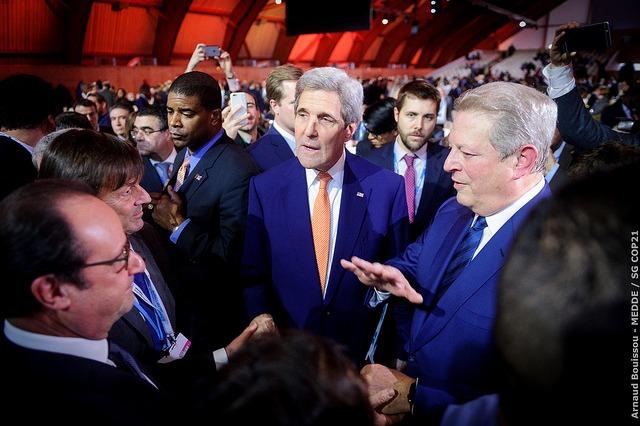

By Alan Barton
There are few examples in recent times of the world’s countries coming together to agree on actions that have profound global and long-term consequences — the United Nations, Bretton Woods and the World Trade Organization are among the most notable instances. In each case, the parties put aside parochial differences and produced agreements that have stood the test of time and had positive consequences far beyond original hopes. The 2015 United Nations Climate Change Conference, commonly referred to as COP21, should be considered to be of similar historic importance.
The final Paris Agreement includes three main components, each of which marks a first for the global community.
- All countries pledge to pursue all measures to keep the earth’s temperature rise below 2 degrees Celsius, in addition to aspiring to an even more ambitious target of a 1.5-degree limit.
- Each country will provide, within a short timeframe, a detailed, structured plan to reduce carbon dioxide (CO2) emissions every year. Standard approaches will be used to measure and monitor the plans, including external oversight. Many countries, including China, the United States and the United Kingdom, have already submitted their plans. (They make fascinating reading.)
- The developed world will assist developing countries to achieve their targets. That may include financial, technology or other support.
While skeptics will argue that the agreement and targets should have been more aggressive and legally binding, pragmatism reigned, and a diverse array of nations found common ground with an agreement that all can accept. Critically, in the words of one of the U.S. representatives, the agreement is “Congress-proof.”
I believe the impact of the COP21 Agreement on U.S. energy policy, investment and innovation will be very positive and dramatic. Fundamentally, CO2 targets will play a key role in driving investment choices by government and industry, marking a profound shift. Look for the following market shifts as well:
- We are already seeing the decline of coal; this will accelerate.
- New chemical and industrial processes will emerge around lowering CO2 footprints (very likely at lower cost).
- Renewable energy and storage will continue to gain momentum, as long as efficiency and costs continue to improve.
- Shipping will become more efficient (larger ships, better fuel economy).
- On-shoring of manufacturing will increase, as transportation is a very large contributor to CO2 emissions.
- The Corporate Average Fuel Economy (CAFE) standards are already driving U.S. CO2 emissions in the right direction, and they will become more demanding as new technology (such as engine efficiency and lightweight materials) drives progress.
- Public investment funds will focus more on CO2 portfolios and will include more energy and infrastructure; they will also include CO2 “sinks” as a more strategic approach to sustainable forestry and even reforestation, which have become critical as temperature increases in the tundra could release huge CO2 emissions that are currently sequestered. Additional risk capital will also be attracted to the opportunity, despite the poor returns of the past few years.
In each of these areas, and many others, the United States has a huge opportunity for technology and commercial leadership. This will drive investor returns and attract significant capital to the challenge, representing a virtuous circle. With China now able to make similar massive financial bets, the American government would be well advised to take the lead and extend the competitive position of U.S. industry.
For Lehigh Technologies, the CO2 targets provide further support for our simple value proposition of lower cost, equal or better performance, and “green for free.” We will expand our long-term efforts to deliver improved sustainability benefits, helping our customers across sectors play an important role in reducing CO2 emissions while gaining meaningful cost reductions.
The COP21 Agreement has brought moral authority to the world stage, and this alone will drive commitment and progress. As with many peaceful revolutions, the return on investment of new technologies will play a key role in delivering the results.
Image credit: Flickr/COP21
Alan Barton is the CEO of Lehigh Technologies. He has led Lehigh since 2008 and has spearheaded expansion into new markets around the world. He has more than two decades of experience in the specialty chemicals industry, including over a decade of management experience. Alan was previously executive vice president at chemicals giant Rohm and Haas, where he led the company’s global coatings businesses. He began his 23-year career at Rohm and Haas in research and development before being promoted into larger management roles in both Europe and the United States. While at Rohm and Haas, Alan also led the company’s sustainable development efforts. Alan holds an undergraduate degree from University College, Oxford, and a Ph.D. in chemistry from Harvard University.